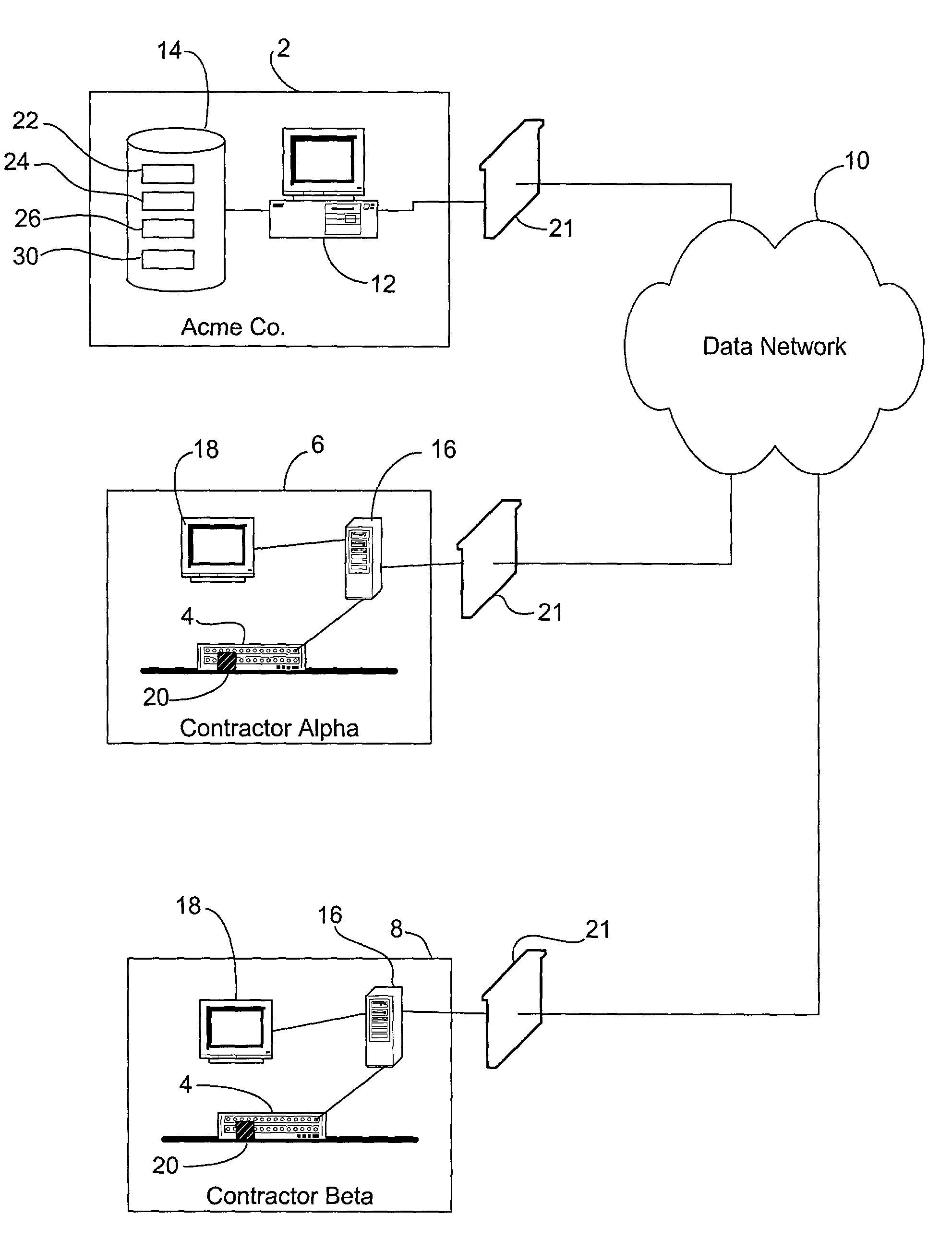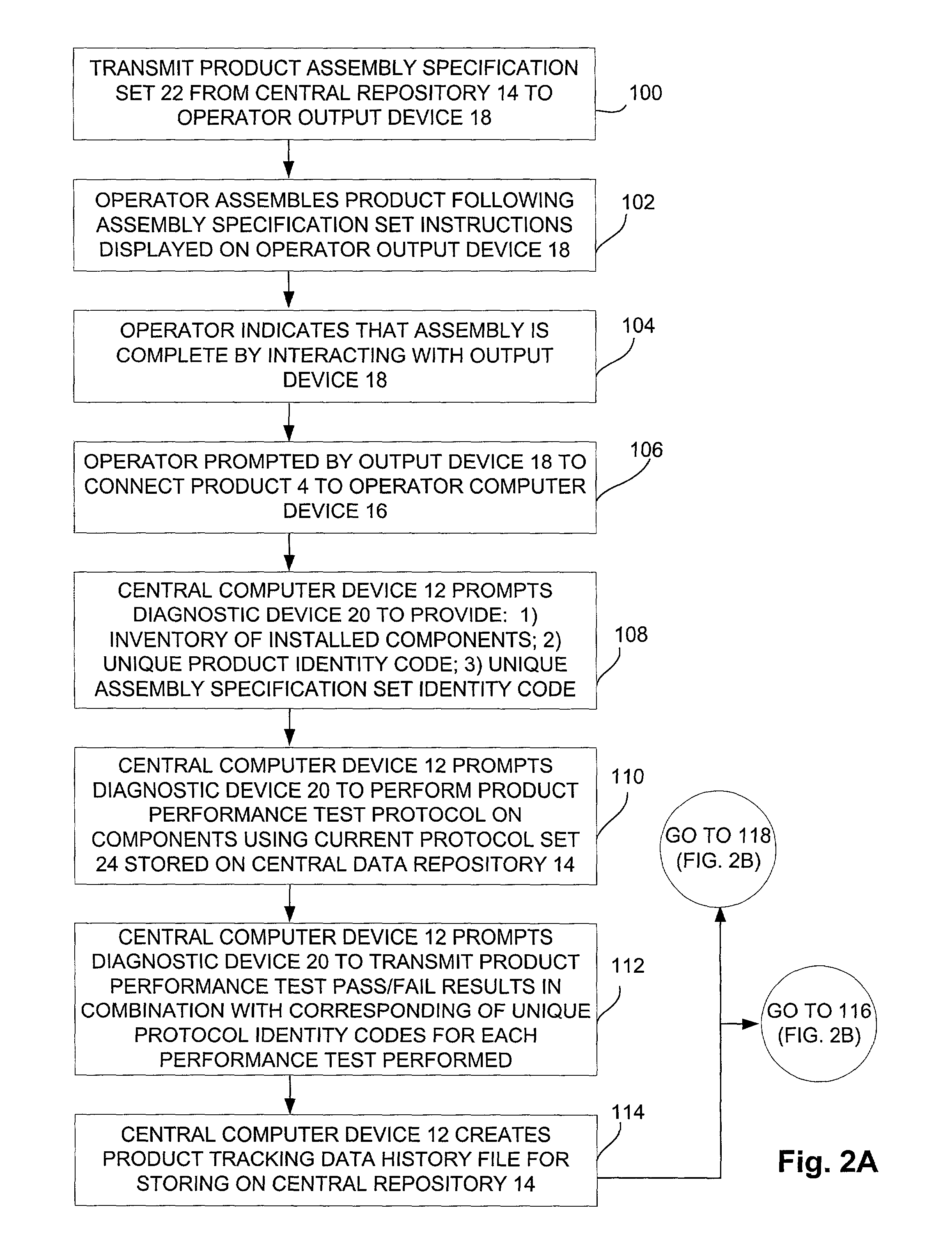Method for managing manufacturing data
a technology for managing manufacturing systems and manufacturing data, applied in the direction of electrical programme control, program control, instruments, etc., can solve the problems of difficult to build an accurate product tracking data history, and even more acute problems, so as to achieve accurate product testing, accurate and tight control over external manufacture, and accurate history of its manufacture
- Summary
- Abstract
- Description
- Claims
- Application Information
AI Technical Summary
Benefits of technology
Problems solved by technology
Method used
Image
Examples
Embodiment Construction
[0025]The schematic of FIG. 1 will be helpful in describing a preferred embodiment of the method of building a product data tracking history of the invention. As discussed above, it has been discovered that the method of the present invention is of particular utility for the manufacture of technically sophisticated products, such as computer peripherals. Accordingly, a preferred embodiment will be described in reference to the hypothetical production of a computer printer by Acme Co. 2 as shown in FIG. 1. The schematic of FIG. 1 illustrates a contract manufacturing situation, where Acme 2 has contracted out the manufacture of a printer 4 to Contractor Alpha 6. It may be assumed that a plurality of component parts have been obtained and shipped to Alpha 6, where they will be assembled to create the final printer 4. Thus, Alpha 6 represents the final assembly “link” in the supply chain for manufacturing the printer 4. Contractor Beta 8 has also been contracted with for partial product...
PUM
 Login to View More
Login to View More Abstract
Description
Claims
Application Information
 Login to View More
Login to View More - R&D
- Intellectual Property
- Life Sciences
- Materials
- Tech Scout
- Unparalleled Data Quality
- Higher Quality Content
- 60% Fewer Hallucinations
Browse by: Latest US Patents, China's latest patents, Technical Efficacy Thesaurus, Application Domain, Technology Topic, Popular Technical Reports.
© 2025 PatSnap. All rights reserved.Legal|Privacy policy|Modern Slavery Act Transparency Statement|Sitemap|About US| Contact US: help@patsnap.com



